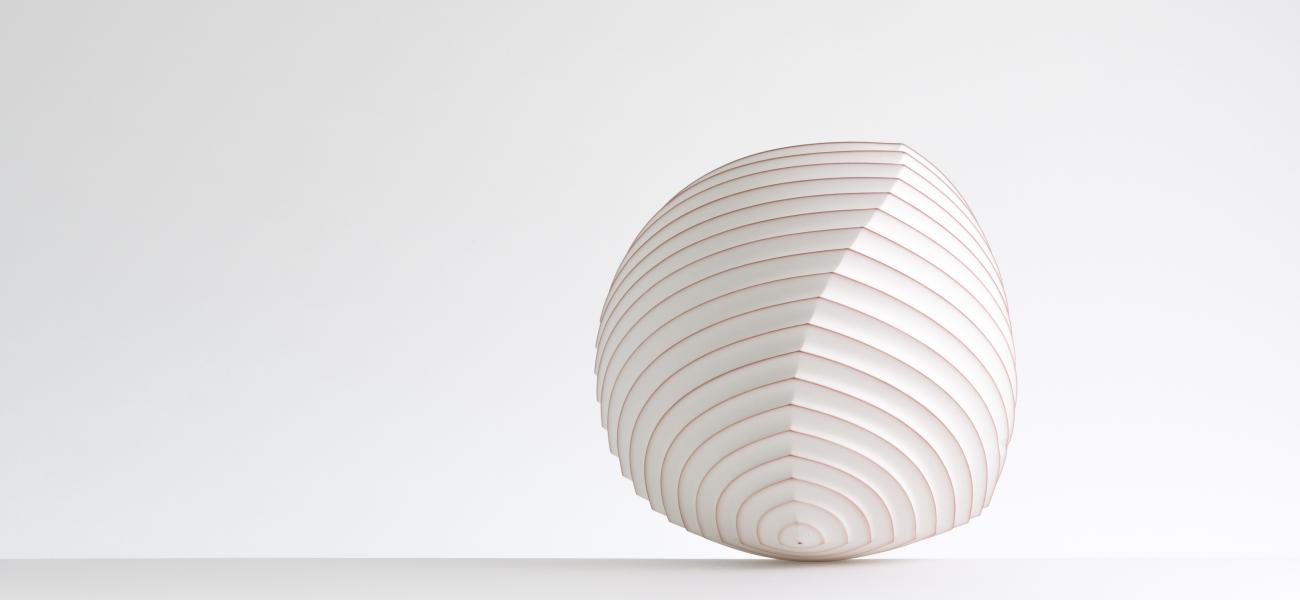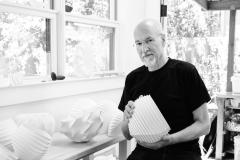Mathematics in Porcelain
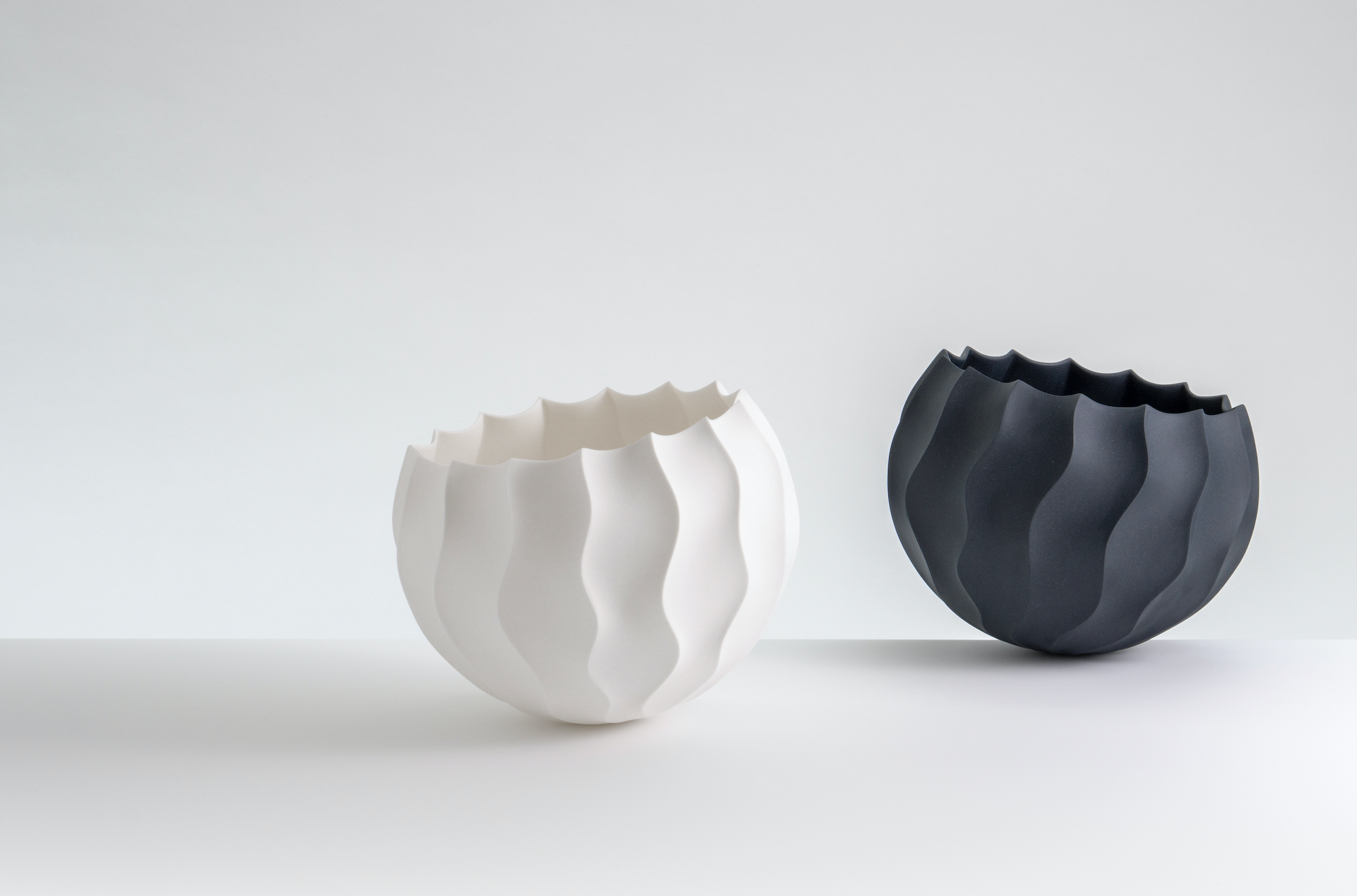 As an engineer turned artist, the draw for me with ceramics was to turn completely away from the virtual digital world and simply create objects with my hands. After a twenty-year career as a digital hardware logic designer, I found hand-building unique, organic forms in clay to be a captivating and cathartic experience. The ceramics community was so welcoming and supportive, and soon clay work became a central focus in my life.
As an engineer turned artist, the draw for me with ceramics was to turn completely away from the virtual digital world and simply create objects with my hands. After a twenty-year career as a digital hardware logic designer, I found hand-building unique, organic forms in clay to be a captivating and cathartic experience. The ceramics community was so welcoming and supportive, and soon clay work became a central focus in my life.
I spent over a decade exploring form and pattern with clay, first making hand-built vessels and then slip-casting my hand-built objects. I love problem-solving and the technical challenges of mastering the making process. During my early years, all my work was burnished earthenware, and eventually, I began to work exclusively with mid-fire porcelain. Because I like the look and feel of the unglazed ceramic surface, from the beginning, I have been using metallic salt watercolors instead of glazes for coloration. I love the way these colorants move within the bisque-fired clay body after they are applied, naturally creating gradients and highlighting edges as they dry in the kiln.
Fast forward to 2020: While sheltering in the studio, I found myself with a wealth of unexpected free time to explore new ideas. I took an online Zoom class offered by the head of the fab lab at the European Ceramics Workcenter (EKWC) in the Netherlands, where I learned about a different approach to contemporary ceramic design: using digital 3D CAD software to design forms, 3D printing mother molds, and then creating plaster slip-casting molds from these 3D prints.
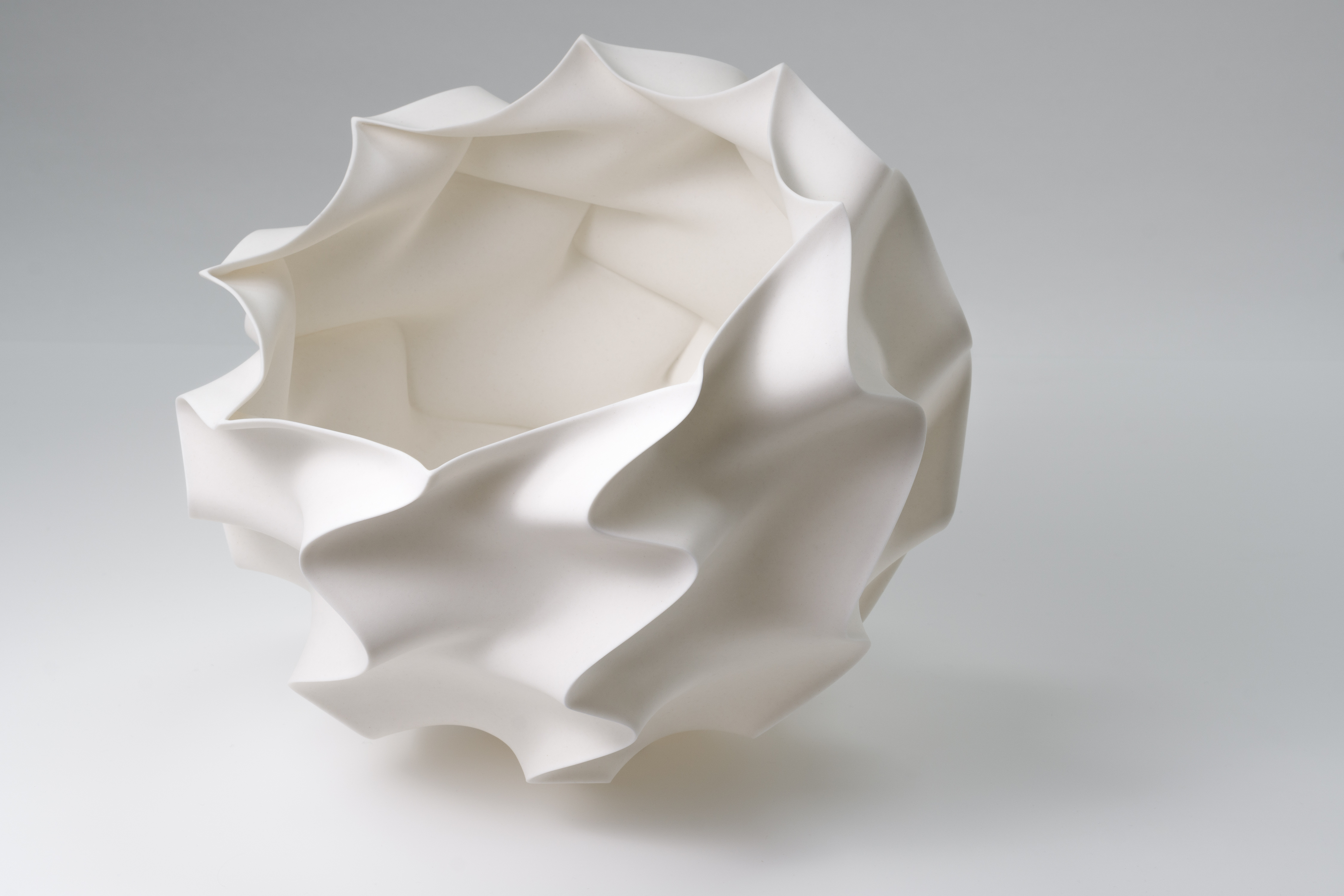 Right away, I realized this concept and set of design tools could be used to create shapes and forms I could envision in my mind’s eye but could never build directly by hand. I gravitate toward organic forms I encounter in nature, things like weathered stones, fractured rock faces, dune fields, and ocean surfaces – my goal is to abstract some of these elements into my work.
Right away, I realized this concept and set of design tools could be used to create shapes and forms I could envision in my mind’s eye but could never build directly by hand. I gravitate toward organic forms I encounter in nature, things like weathered stones, fractured rock faces, dune fields, and ocean surfaces – my goal is to abstract some of these elements into my work.
The reality of slip-casting thin, translucent vessels involves dealing with the constraints of the mold-making process. Ideally, multi-part mold partitions should follow the contours of the form in order that the seam lines will be invisible in the final work. I saw how digital tools could be used to make interesting new forms, as well as the molds needed to produce them. I could construct arbitrarily curved mold division planes that exactly follow the lines of the form, with no undercuts.
I spent the better part of a year learning some of the intricacies of Grasshopper algorithmic modeling software, Rhinoceros 3D CAD software, and how to make these designs physically using a low-cost 3D printer.
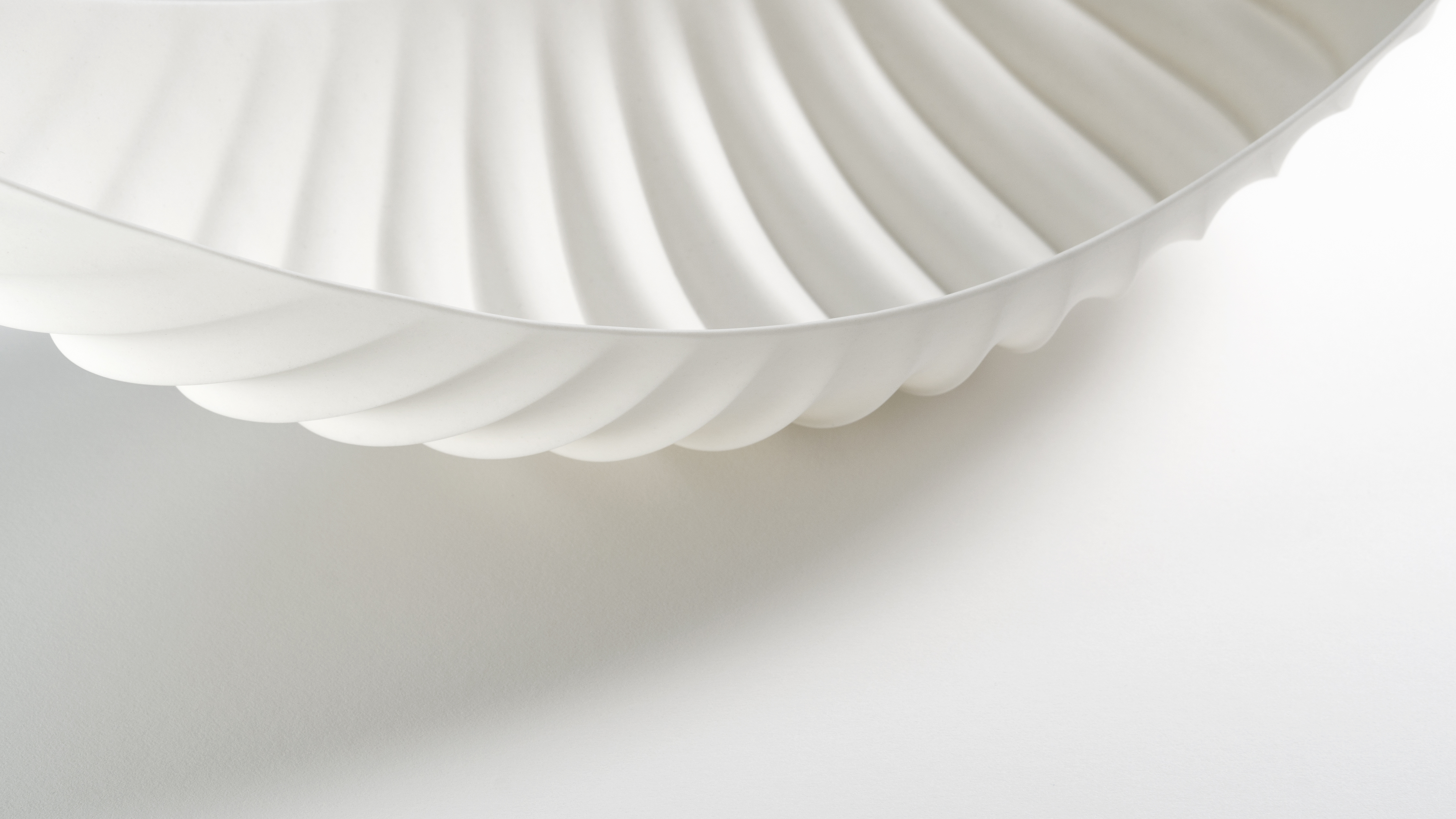

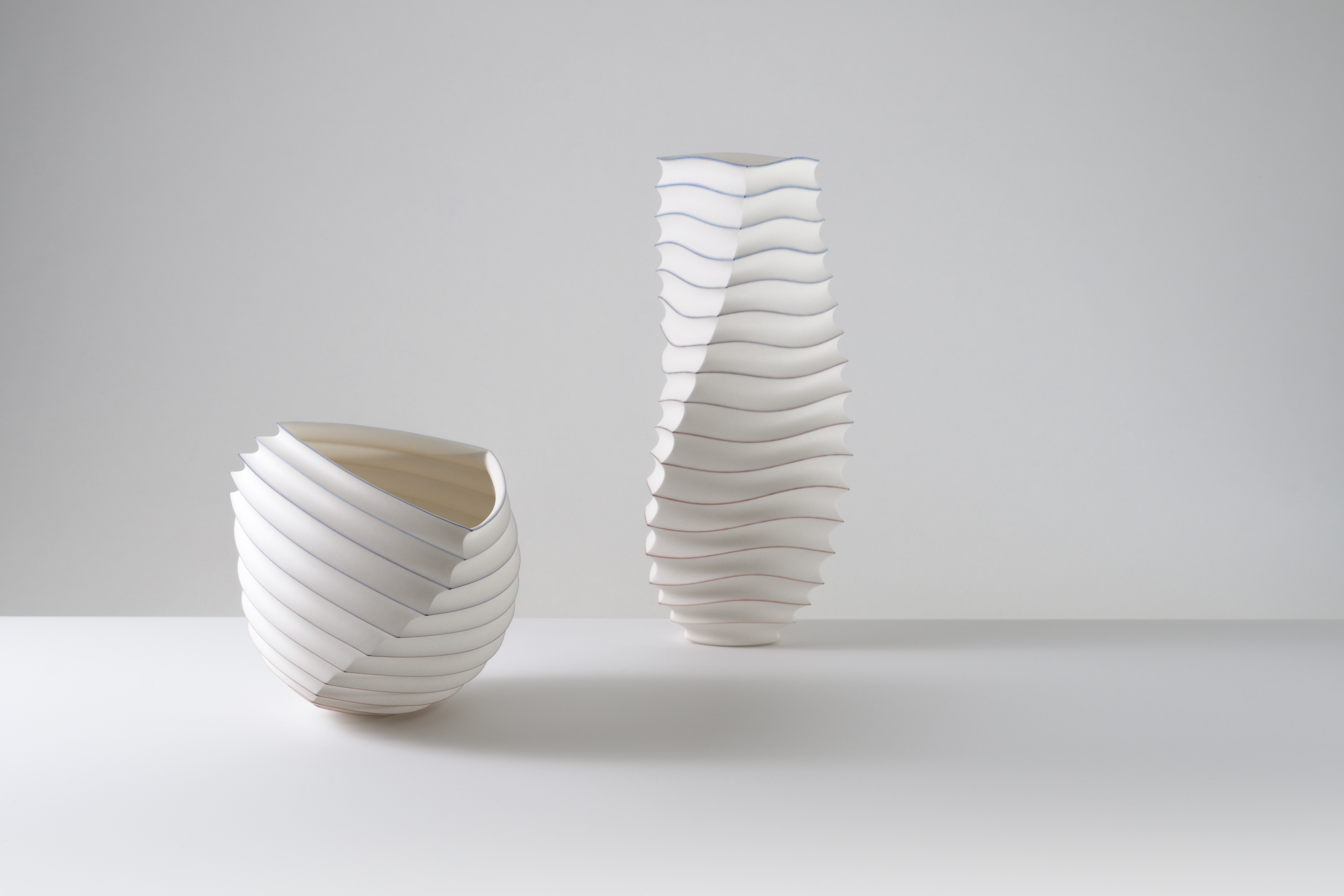
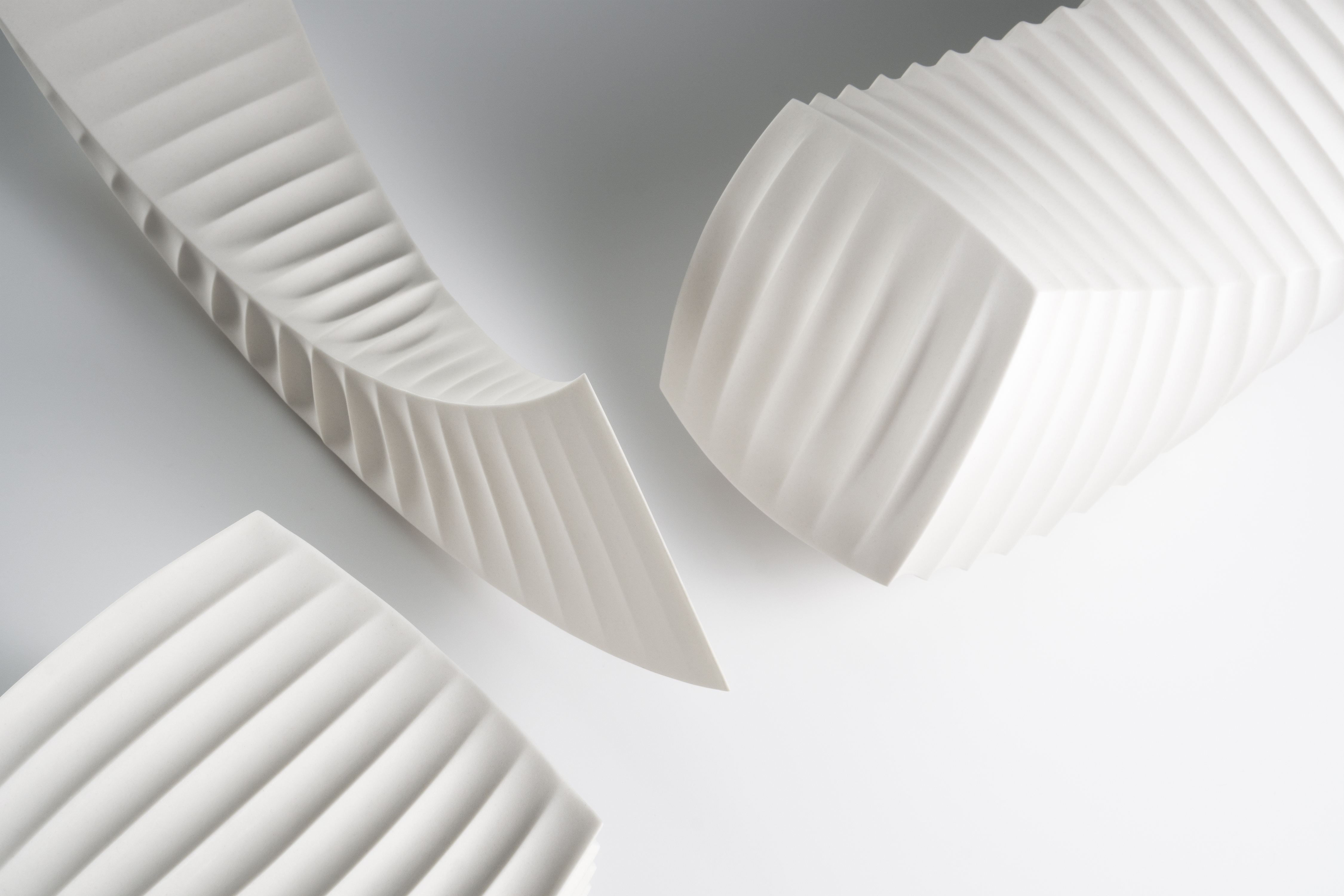
Given my 3D graphics engineering and ceramics backgrounds, this turned out to be a perfect fit for me to channel my creative energies. For the past two years, I have been venturing into these waters and have, in essence, come full circle – integrating my engineering and artistic selves to create a new body of work that lives at the intersection of organic forms grounded in nature and digital algorithmic design – celebrating the connection between art and science. There is still a lot to learn, and I am only at the beginning of an exciting artistic journey.
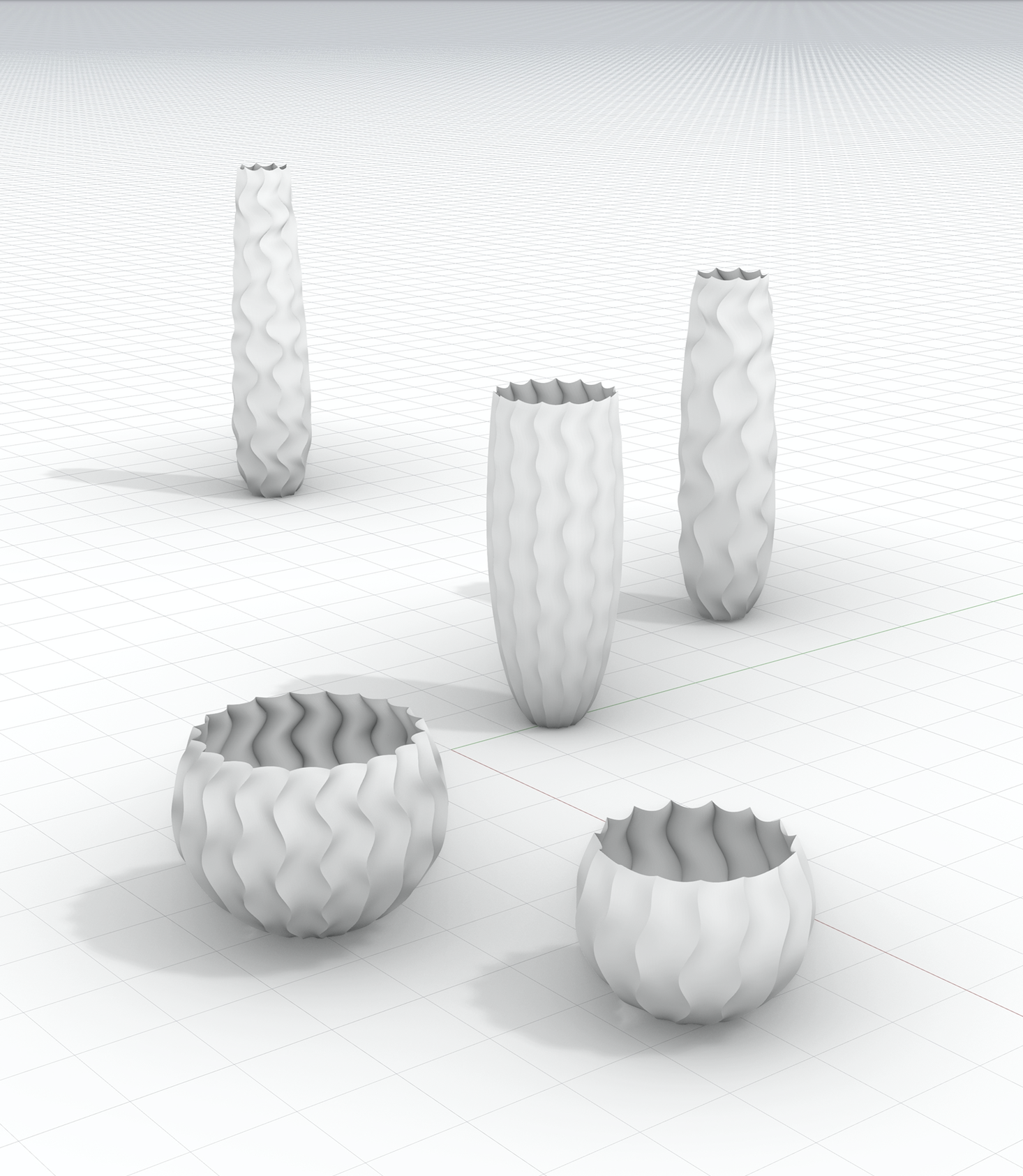 As an example, my Wave Form series consists of minimal radial forms that share the feature of simple sine wave curves that wrap around the object to define ridges and valleys. My process is to sketch the root form, define the wave frequencies and repetitions, then use Grasshopper and Rhino 3D to integrate these elements to create a digital model and the mold needed to cast it. From the computer model, I print a physical (positive) mother mold and use this directly to cast the (negative) plaster slip-casting mold. The 3D printer is the bridge between virtual and physical objects. Once I have the plaster molds, I slip-cast my thin, translucent porcelain objects, just as I have been doing for many years.
As an example, my Wave Form series consists of minimal radial forms that share the feature of simple sine wave curves that wrap around the object to define ridges and valleys. My process is to sketch the root form, define the wave frequencies and repetitions, then use Grasshopper and Rhino 3D to integrate these elements to create a digital model and the mold needed to cast it. From the computer model, I print a physical (positive) mother mold and use this directly to cast the (negative) plaster slip-casting mold. The 3D printer is the bridge between virtual and physical objects. Once I have the plaster molds, I slip-cast my thin, translucent porcelain objects, just as I have been doing for many years.
My Wave Form objects use the interaction of different wave frequencies to create delicate curving surfaces as the waves reinforce or oppose each other. These forms mirror natural phenomena such as water waves, sand dune ridges, or musical tones. When lit from an angle, the combination of sharp ridges and soft valleys casts intriguing shadows across these sculptural forms. As with all my work, the overarching theme is to make objects that reference the natural world, which is always my source of inspiration.
Another body of work, Origami, is inspired by the Japanese art of paper folding. I construct surfaces from a series of creases using repetition and interpolation. Within Grasshopper, I shape the individual creases with elliptic and parabolic curves, sometimes bent further with sine and cosine waves. These corrugated surfaces are joined together in software to create various multi-sided forms. The resulting slip-cast translucent porcelain objects echo the texture and feel of paper with a little bit of tooth, and the creases are analogous to paper folds.
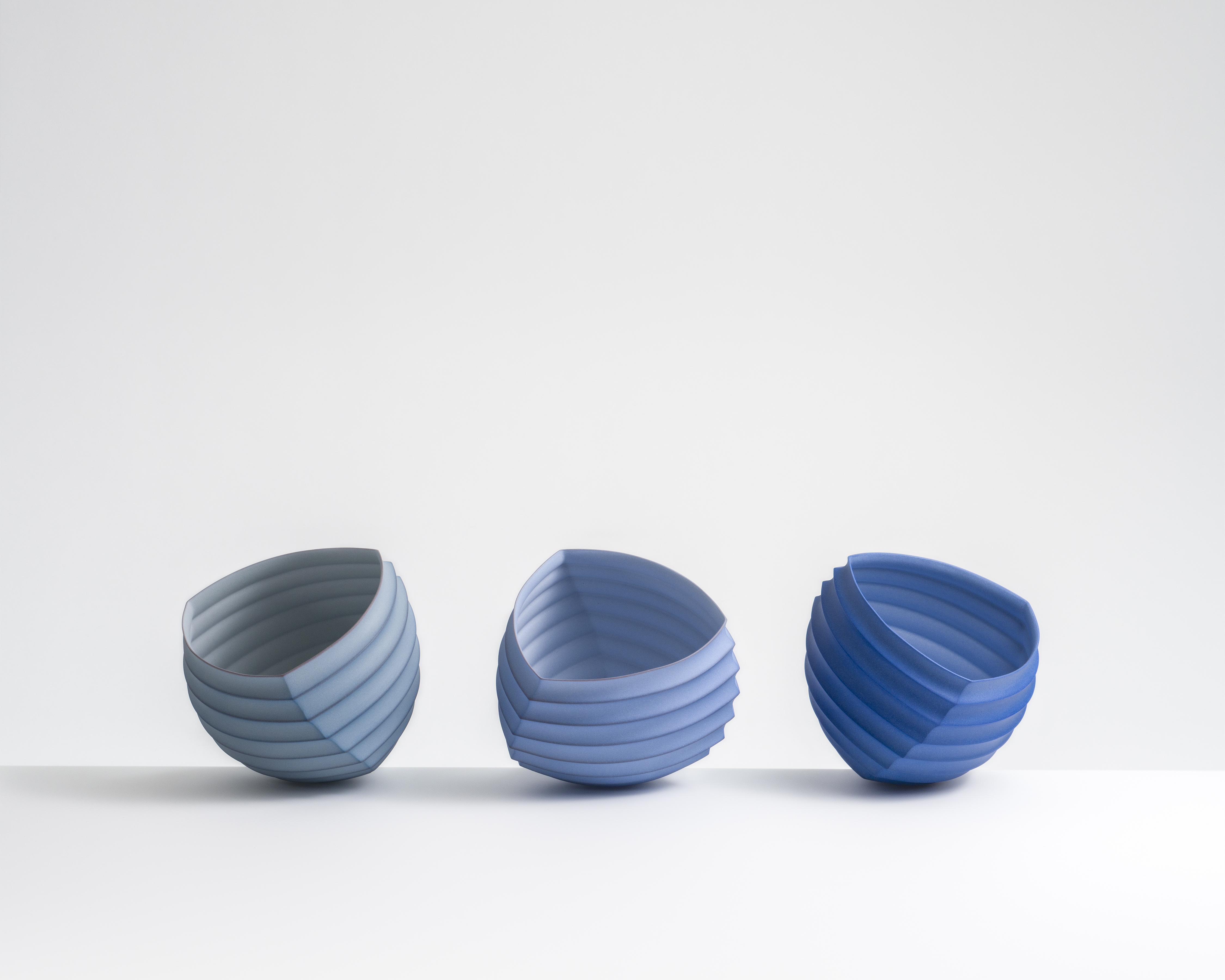
For me, these tools have opened a new avenue for creative expression in my quest to explore the mysterious language of form. As with any making process, the tools we use influence our ideas and what we make. For instance, using a potter’s wheel or lathe results in objects that are radially symmetric with a circular cross-section. Algorithmic modeling software has given me the means to construct precise forms that use interpolation and repetition in ways that would be difficult to create any other way.
Because the Grasshopper visual programming language is basically a big library of math functions that can be interconnected to describe three-dimensional forms, at the heart of my approach to ceramics design is the inherent mathematics involved in creating these objects. At a conceptual level, my current work is essentially math made physical or mathematics in porcelain.

